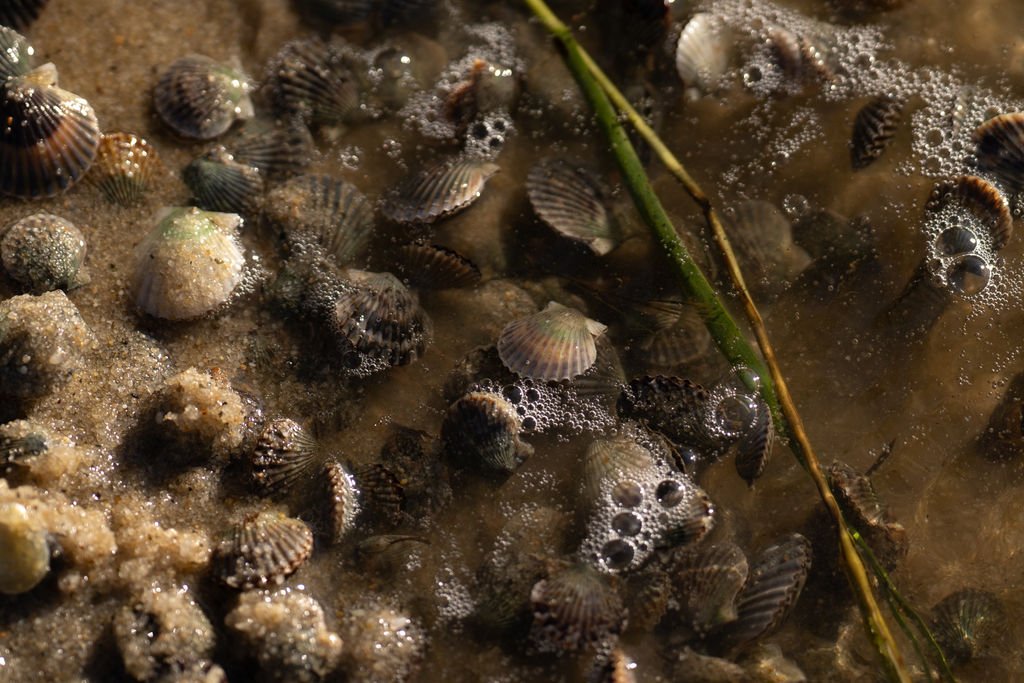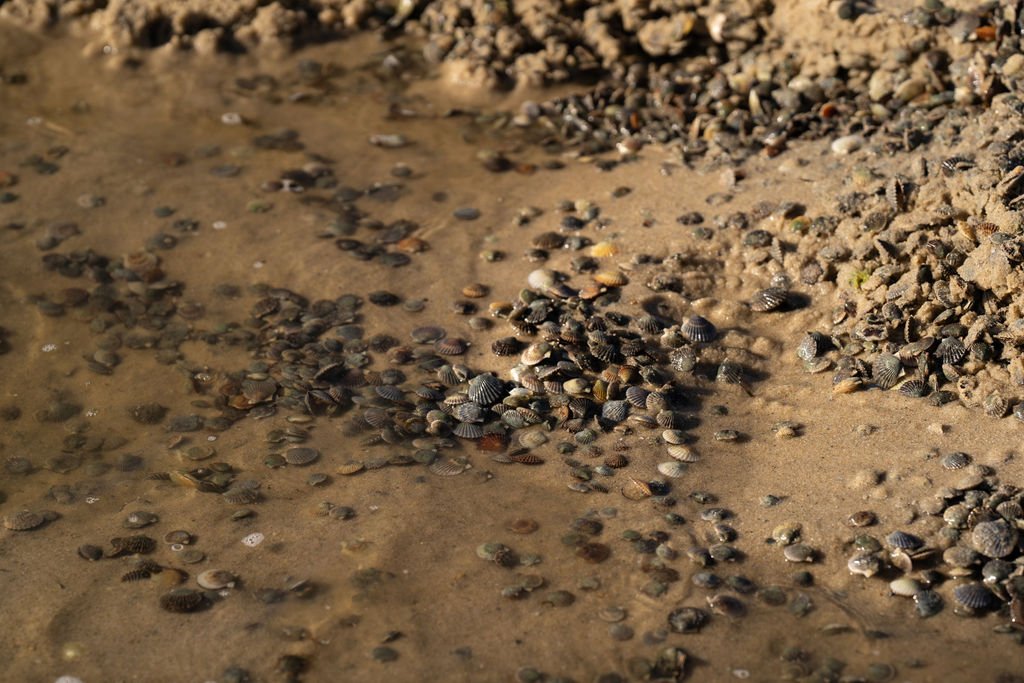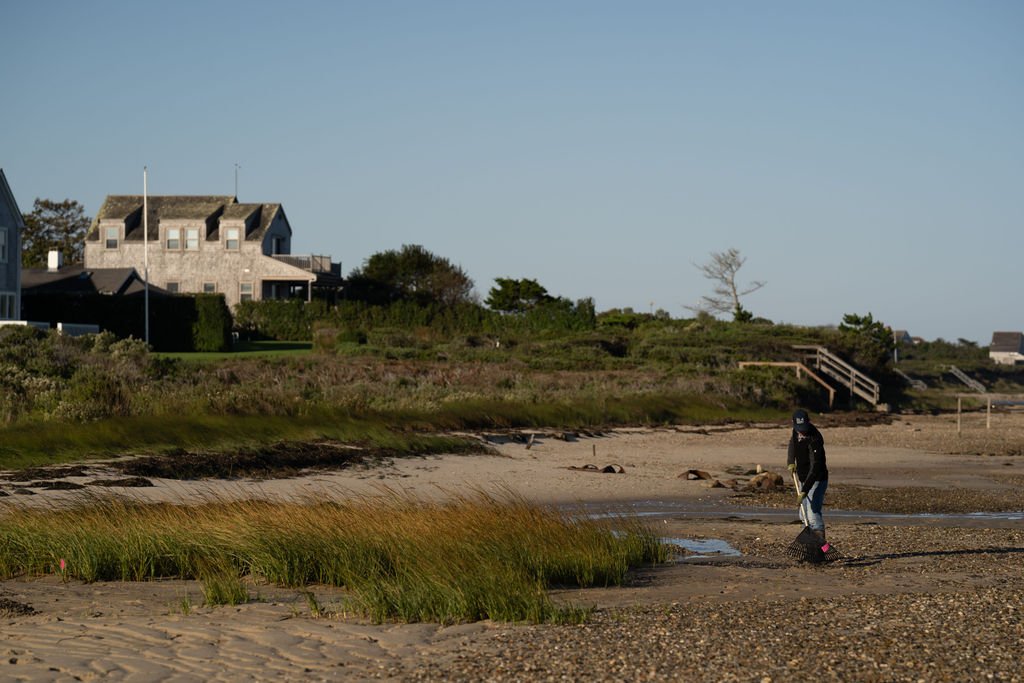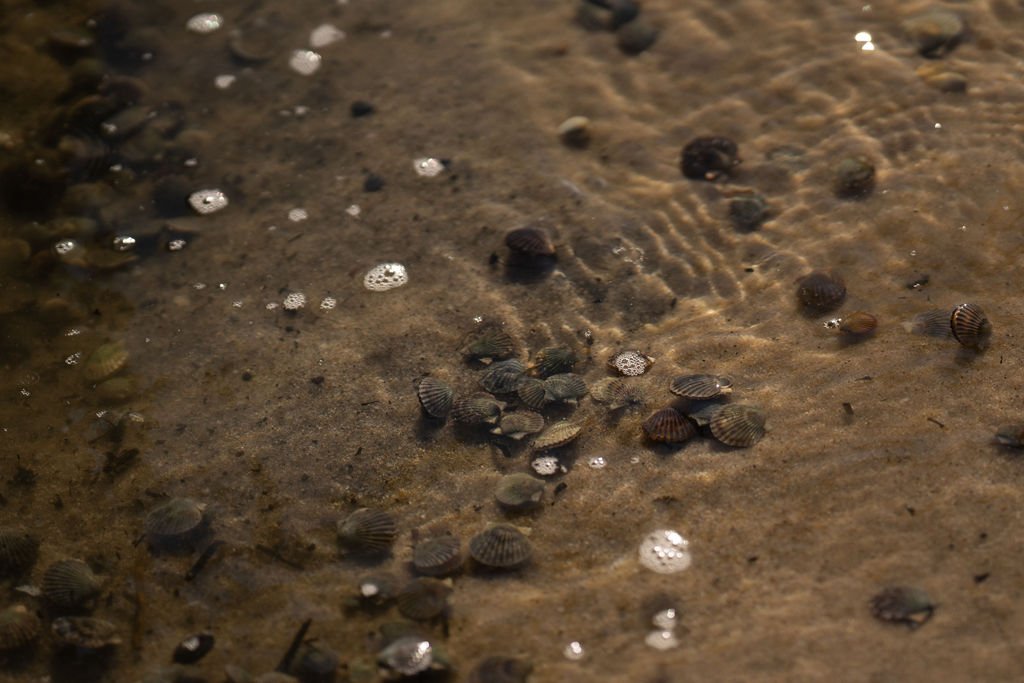Hurricane Lee Seed Stranding Recap
Photos by Tucker Finerty for the Nantucket Shellfish Association
Thank you to everyone who helped rescue scallop seed after Hurricane Lee on Sunday, September 17th. We are so grateful for the outpouring of support from our community who rallied on short notice, showed up with shovels, and got to work!
What was the preparation and planning for a seed stranding response?
On Saturday morning at first light, NSA Executive Director Samantha Denette and Tara Riley, the Shellfish and Aquatic Resources Manager for the Town’s Natural Resources Dept, went out to check beaches on Nantucket Harbor’s south shore. Starting at the Wauwinet, checking locations on Pocomo, the UMass Field Station, and Quaise, three main strandings were identified. From there, the call went out to our community with the help of local media as well as to members of the NSA Fishermen’s Council.
What was the day of response?
On Sunday morning, the NRD Team ran two public sites (Pocomo Point and Quaise) while the NSA took point on a stranding in Pocomo accessible by private property. By 9am on Sunday, the NRD Team at Quaise had worked their way all the way down the beach to Quaise Point. There it was discovered that the previous night’s wind and high tide had washed an incredible amount of scallop seed ashore. We quickly mobilized our NSA Team to relocate and arrived by boat from Polpis Harbor to help that effort.
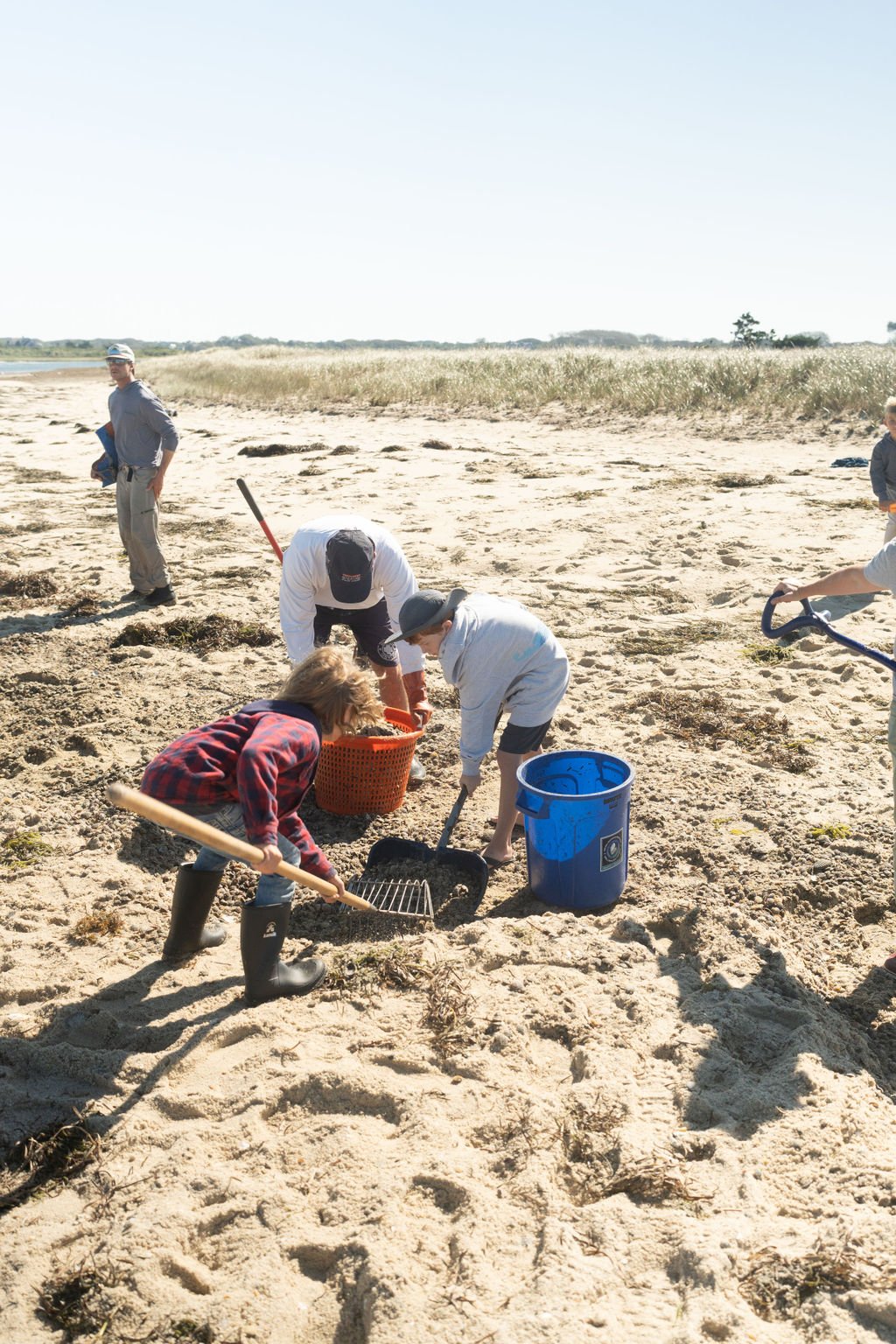
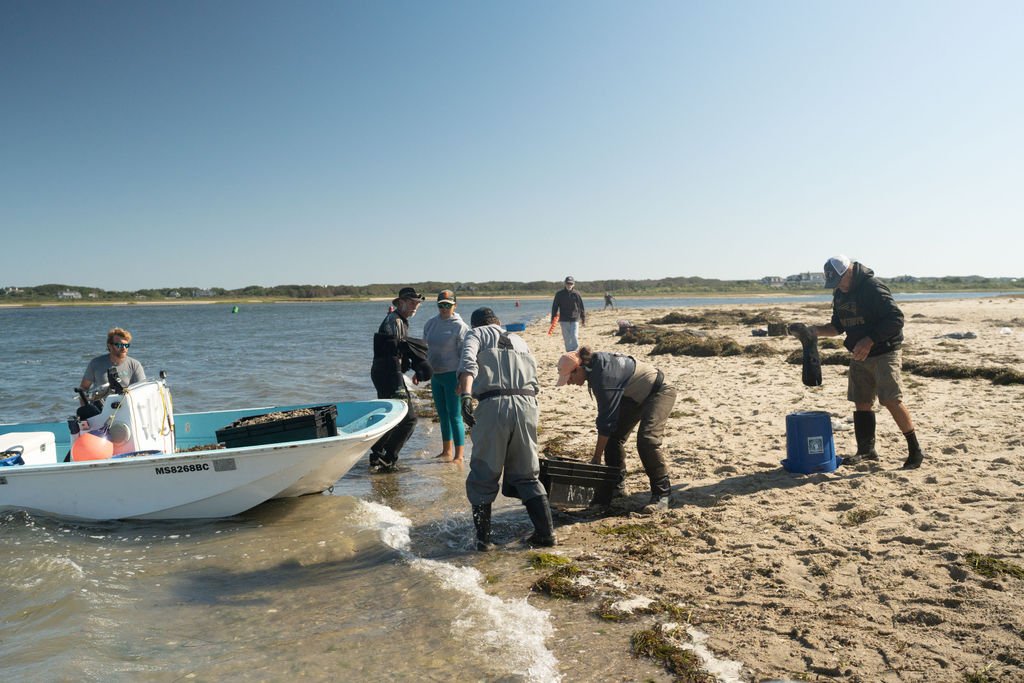
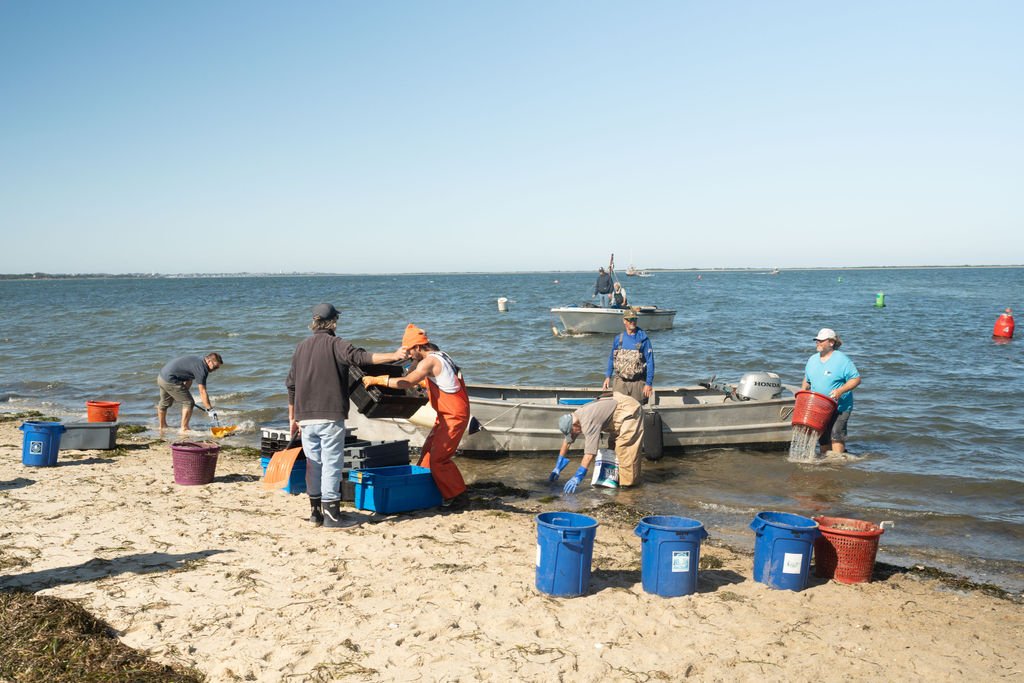
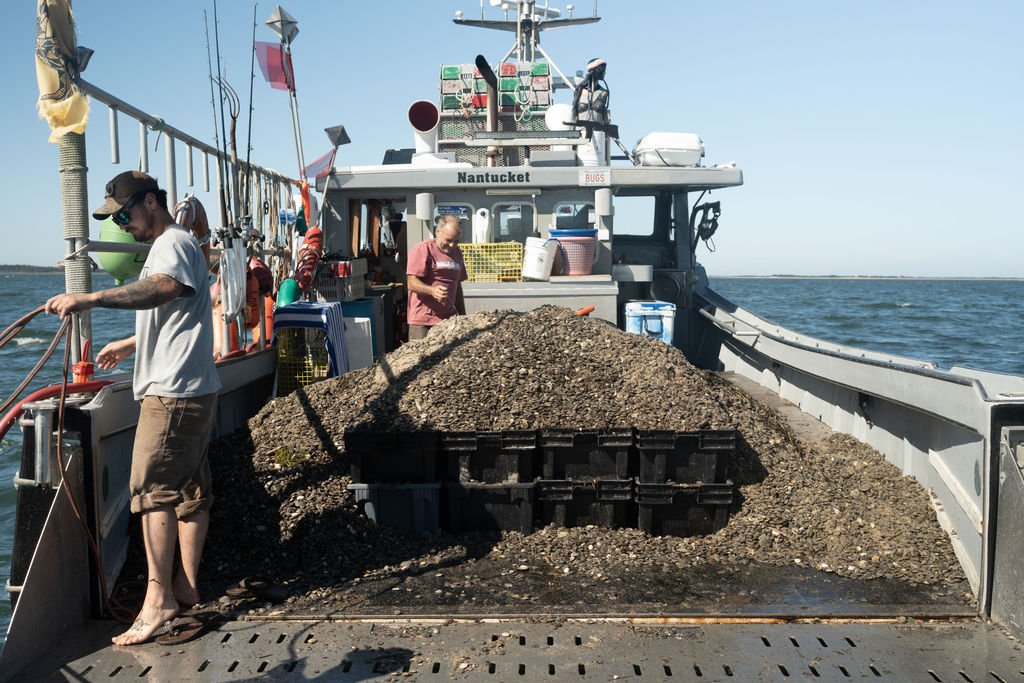
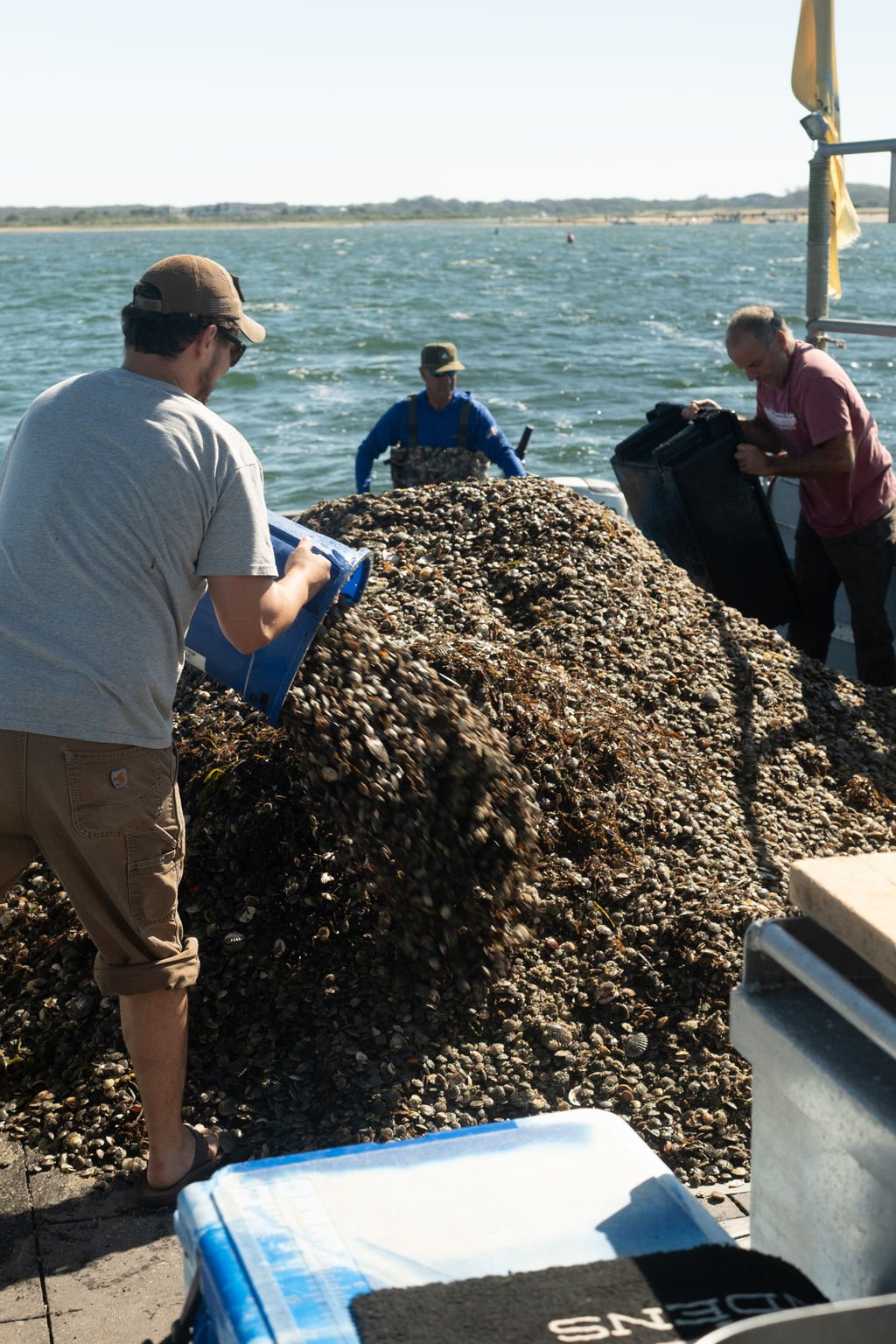
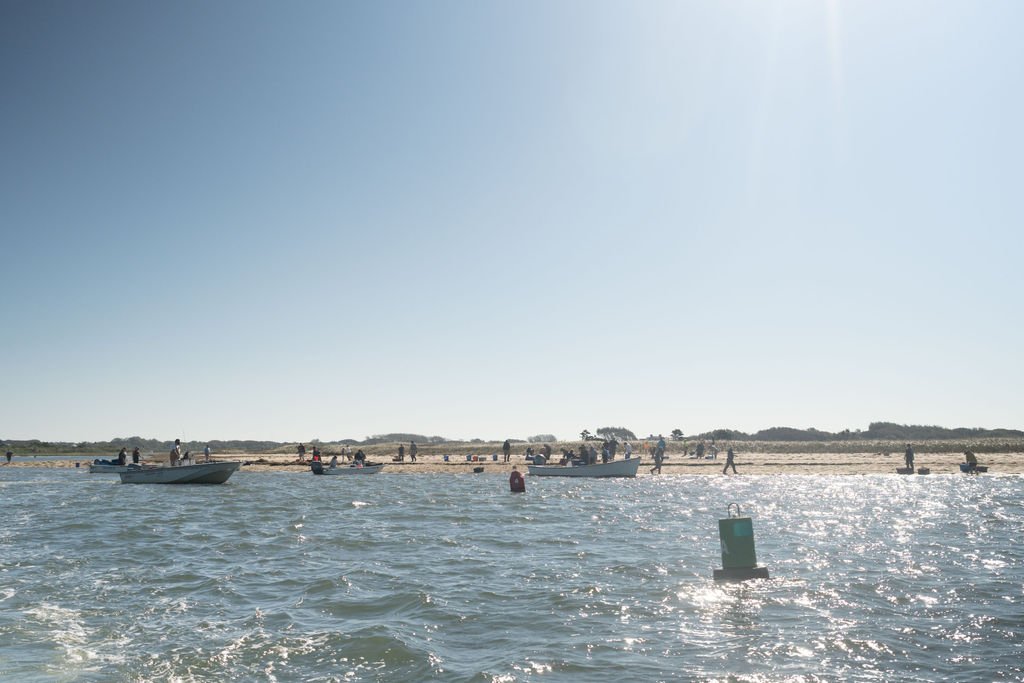
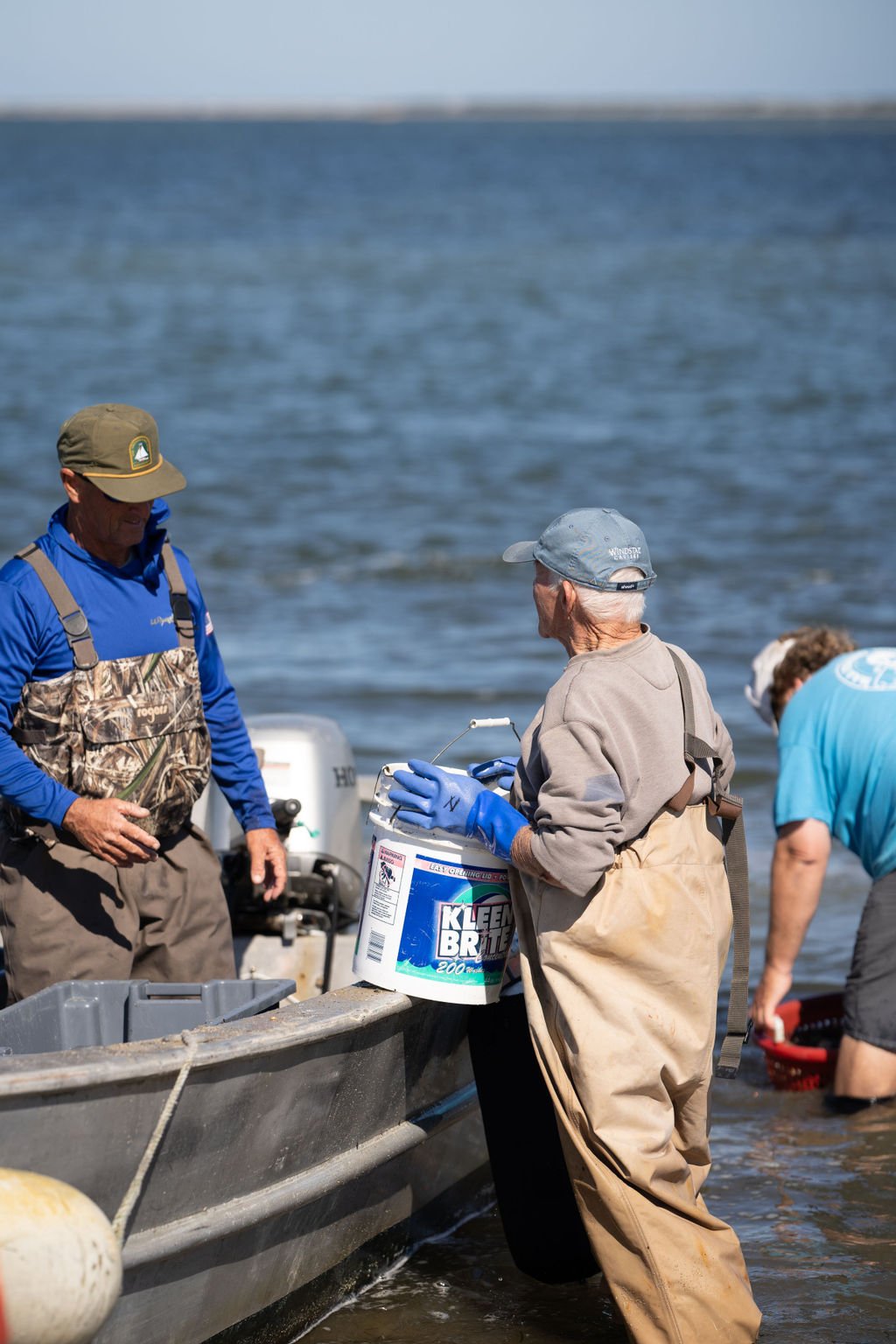
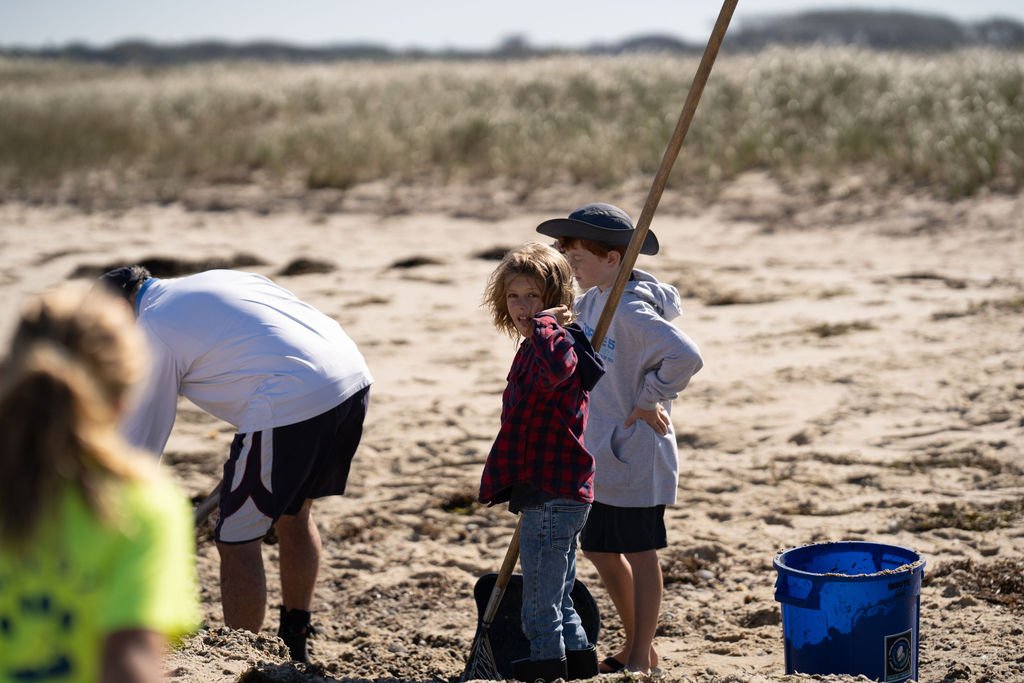
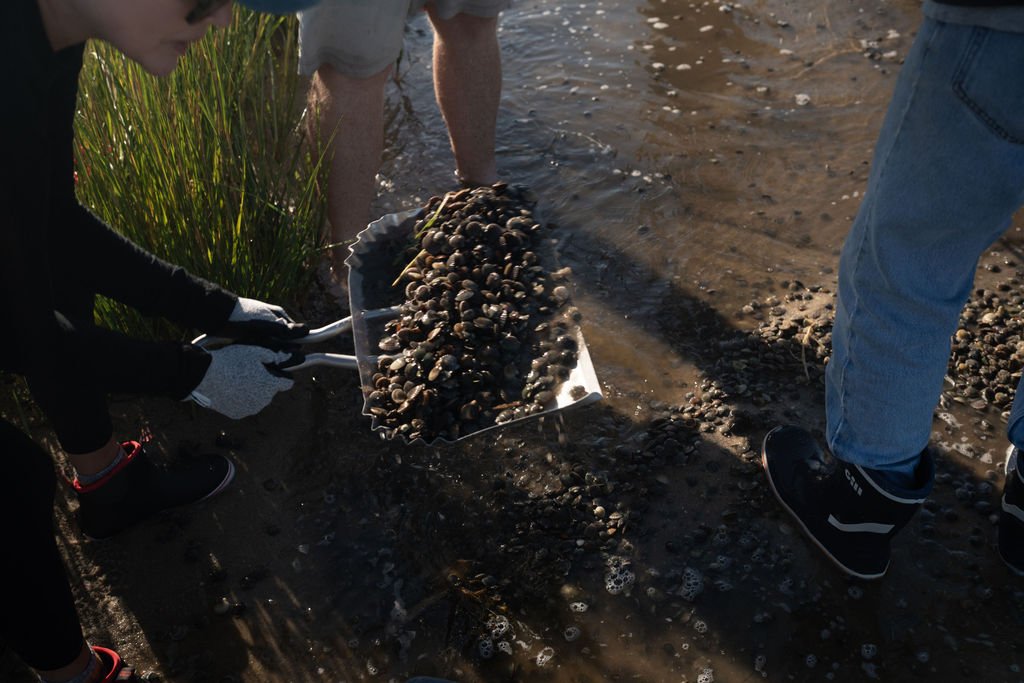
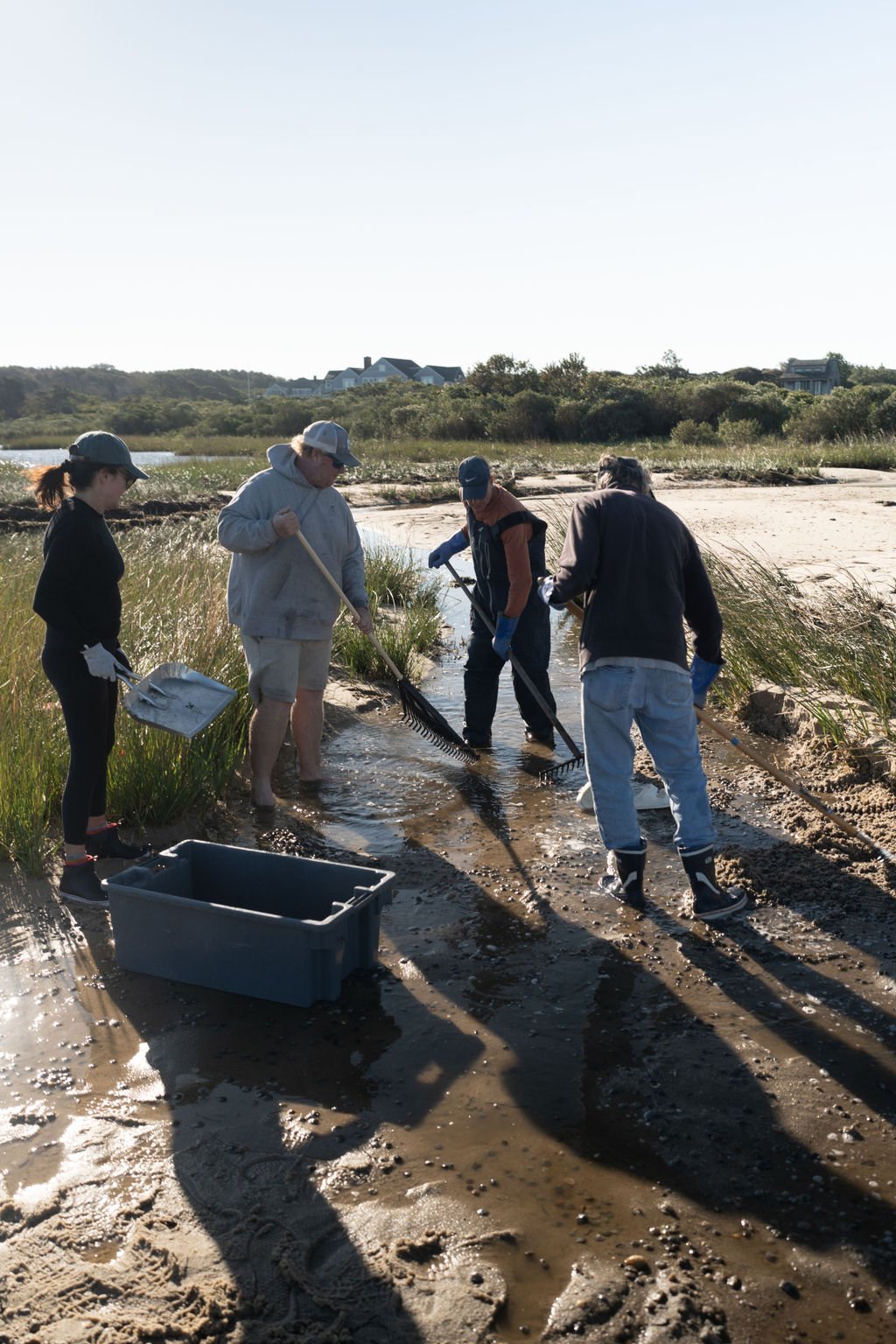
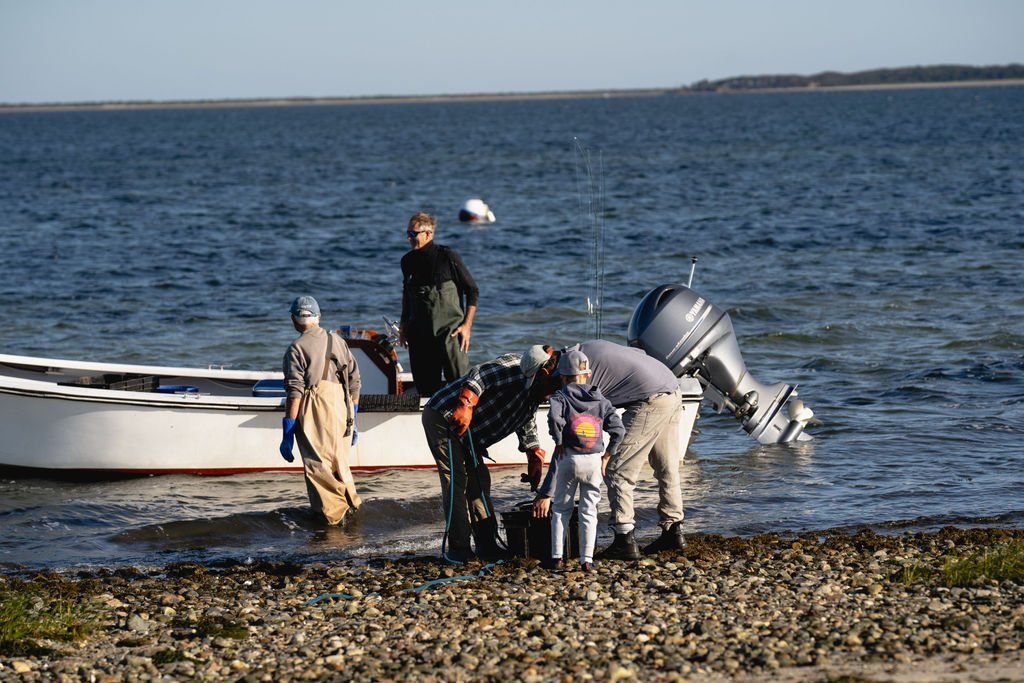
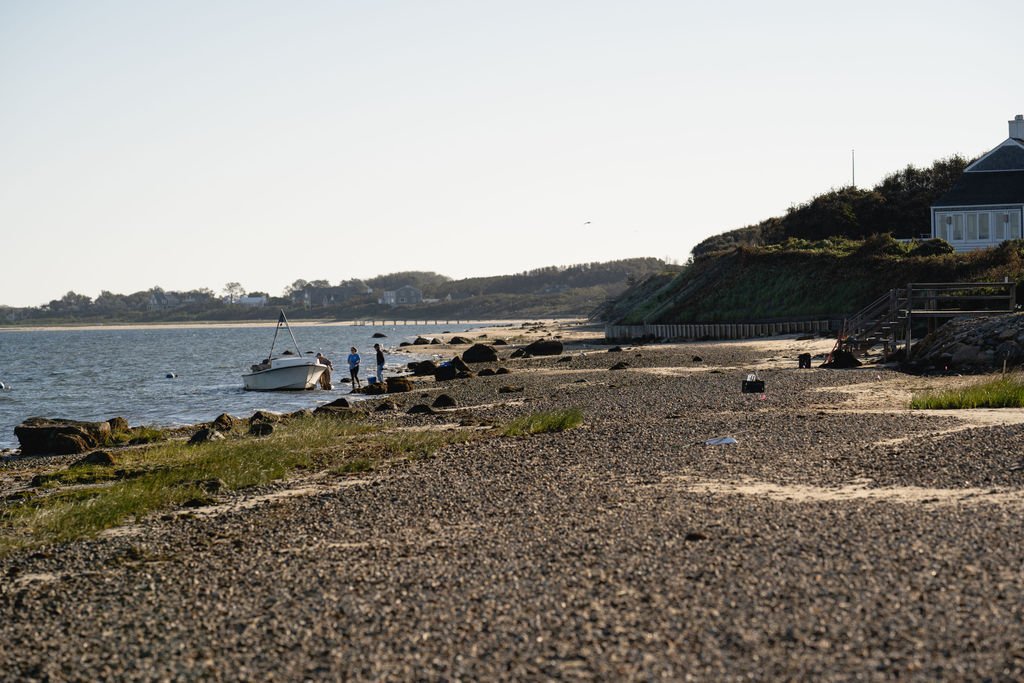
How did we move the scallop seed?
On the beach, we raked and shoveled scallop seed into buckets and fish totes. Those were then lifted onto boats run by the NRD and local fishermen to relocate them to different parts of the harbor. Altogether, we had help from nine boats, including one skiff that delivered scallop seed to a lobster boat to distribute throughout the channel in the middle of Nantucket Harbor.
As for those on land, we are grateful for the many, many volunteers who came to all locations to help. We had volunteers ranging from six years old to those in their seventies! It was truly inspiring to see how many members of our community came out to lend a helping hand.
How much scallop seed was moved?
We estimate that around 340 fish totes of scallop seed were moved off the beach. That equates to about 23,800 Liters. The NRD Team took one liter as a sample and used the amount of scallops in that liter as a way to approximate the total number of seed. Based on the estimates, we can project that over 6.7 million juvenile scallops were rescued from stranding!
What does that mean for future years of scalloping?
If 100% of the seed moved lives until maturation next year, it would total over 19,000 commercial bushels of scallops! To put that in perspective, we have not harvested over 10,000 bushels in the last five years. In 2013, the commercial scallop fleet harvested 18,000 bushels. While we never expect full survivability from stranding responses, this offers a positive outlook for next year.
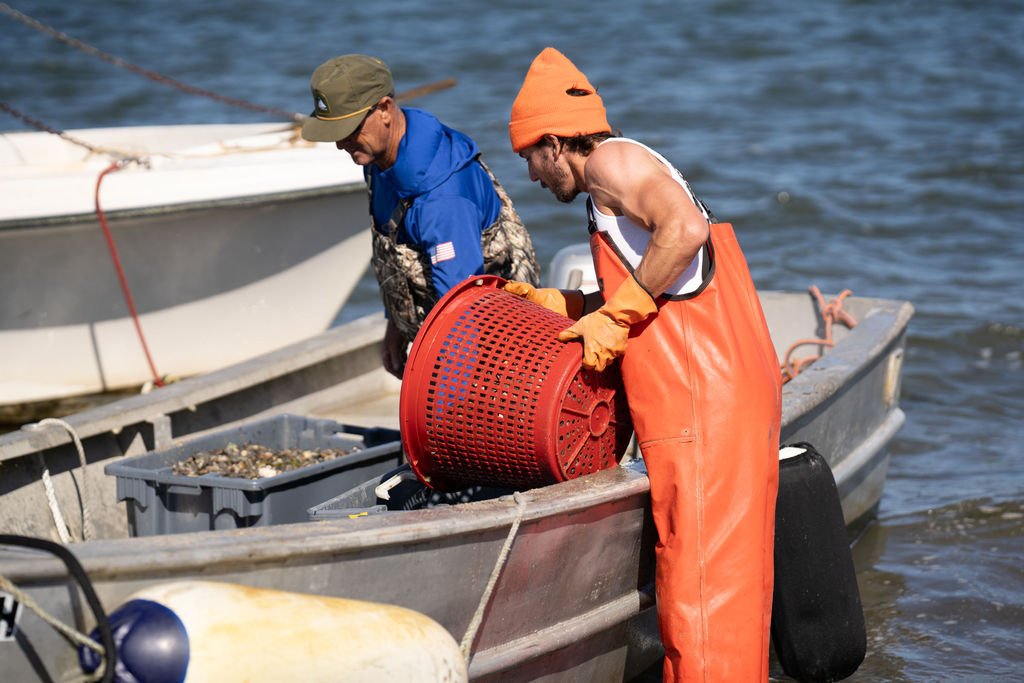

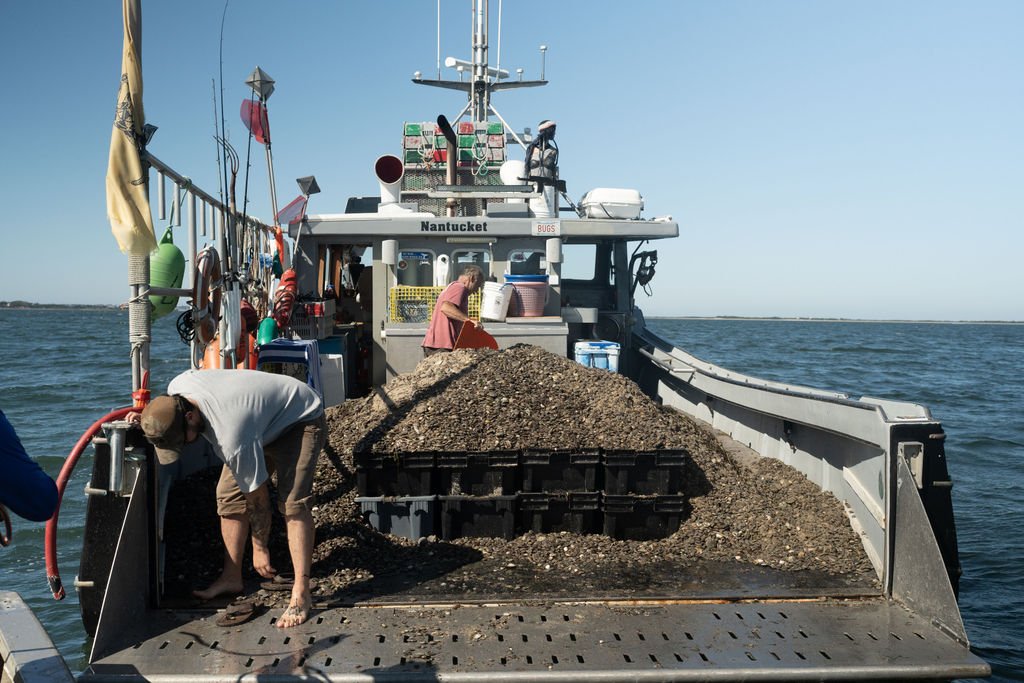
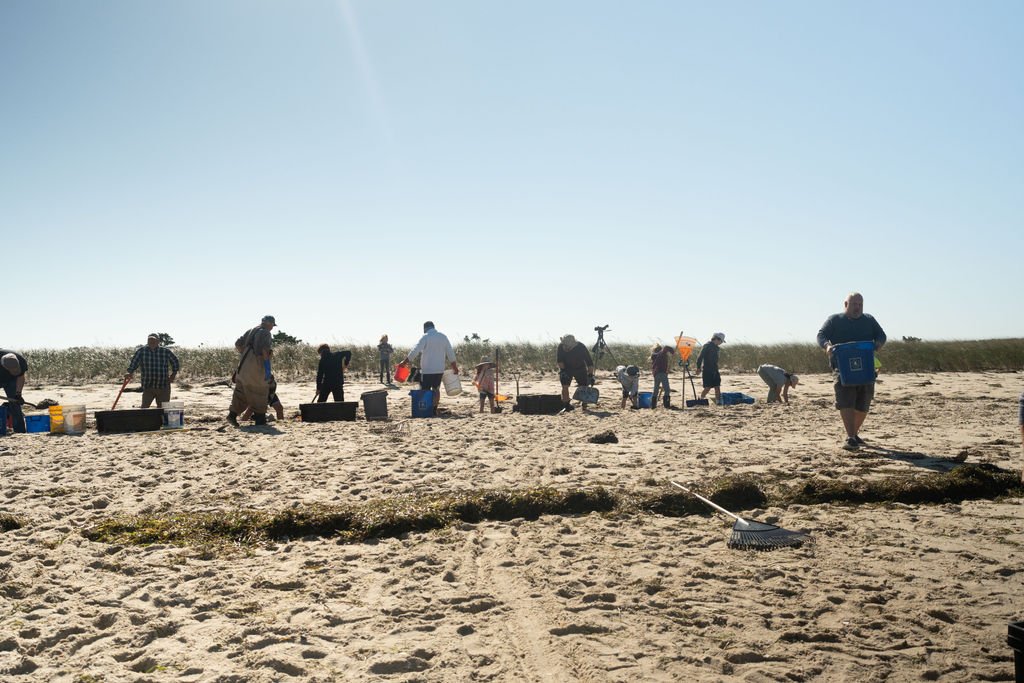
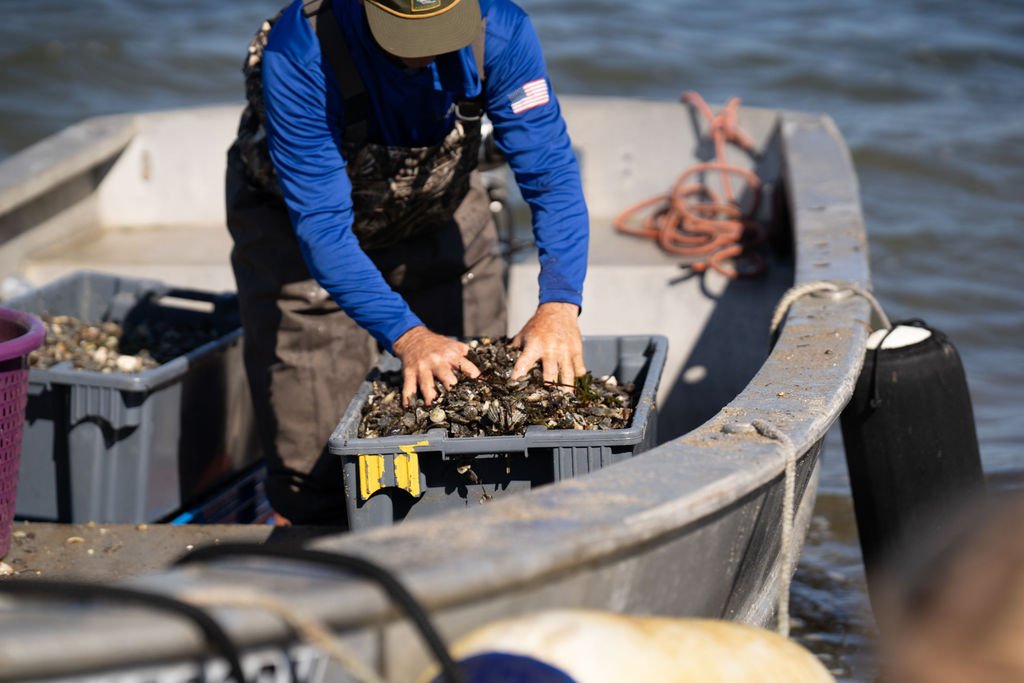
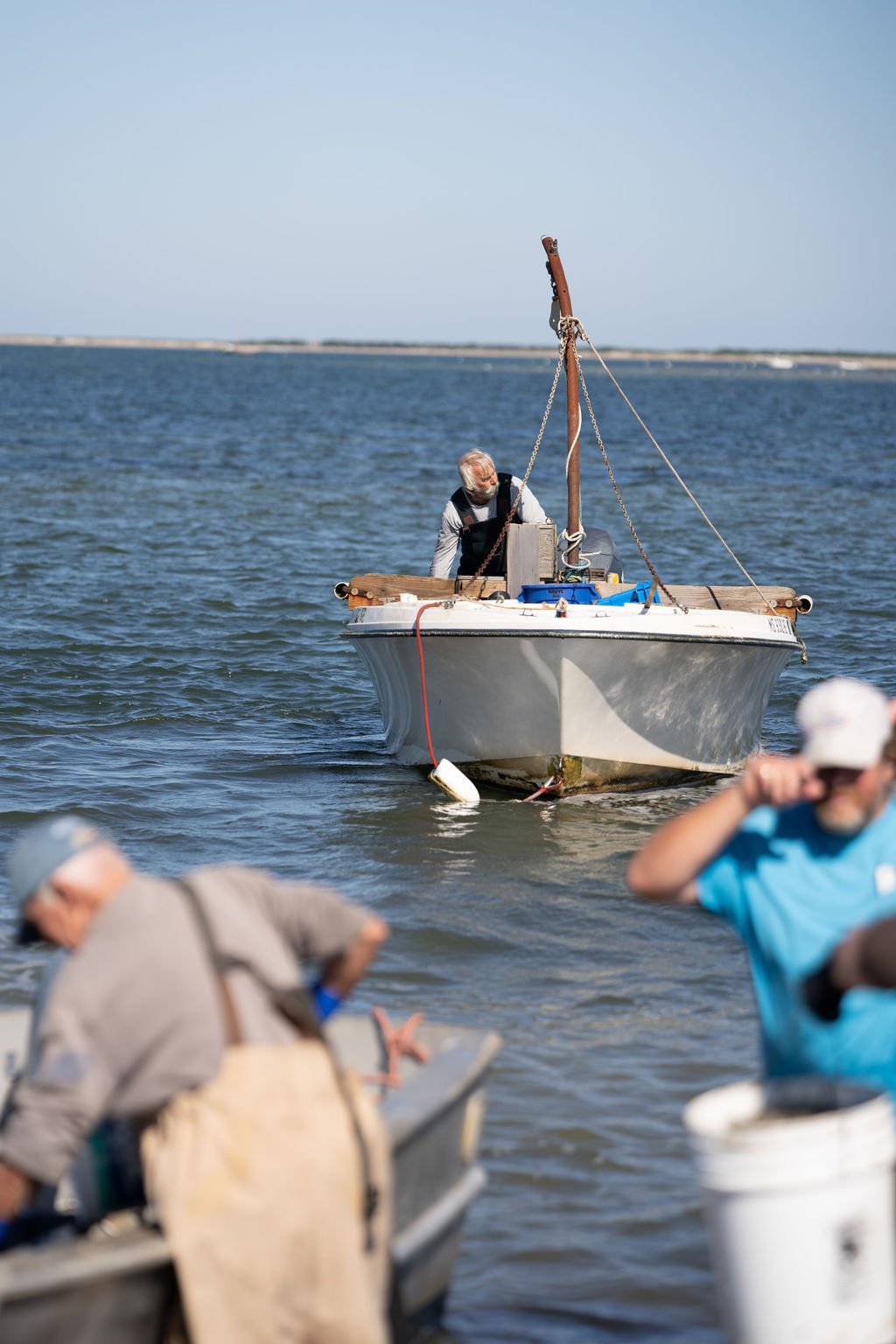
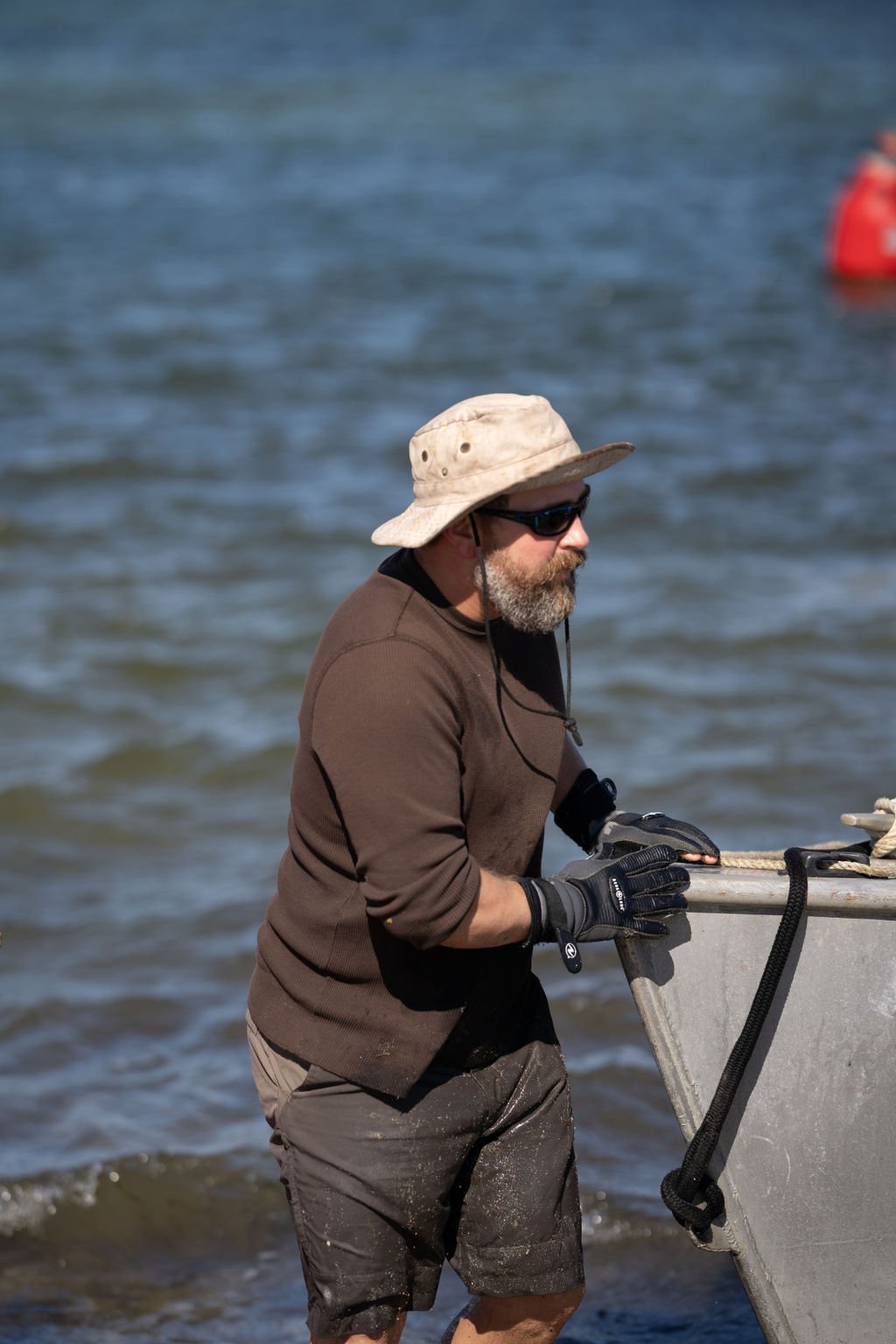
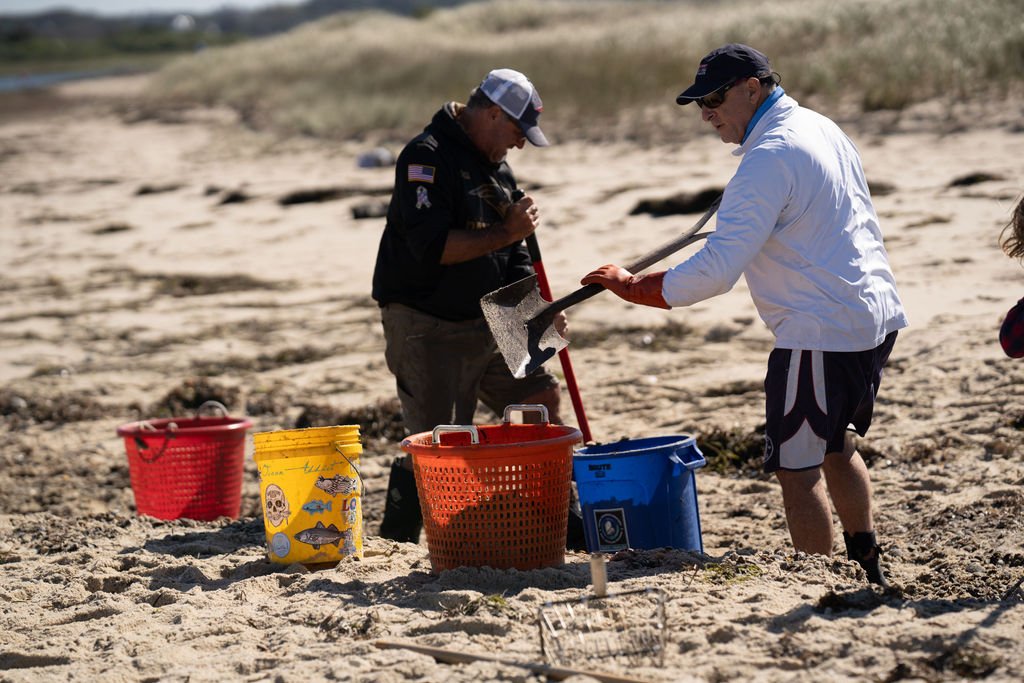
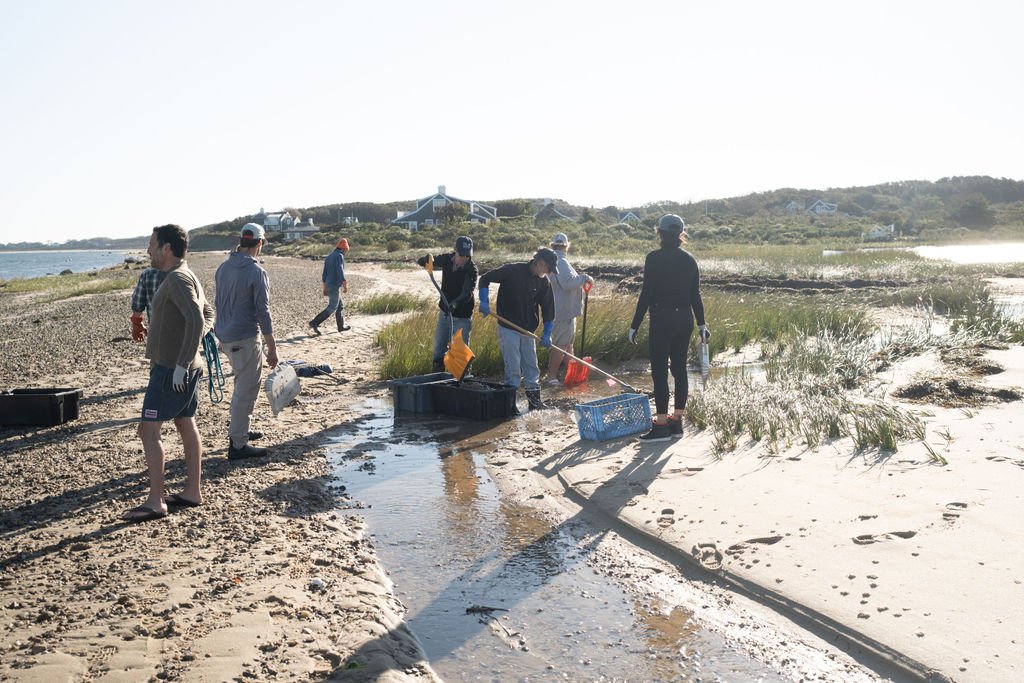


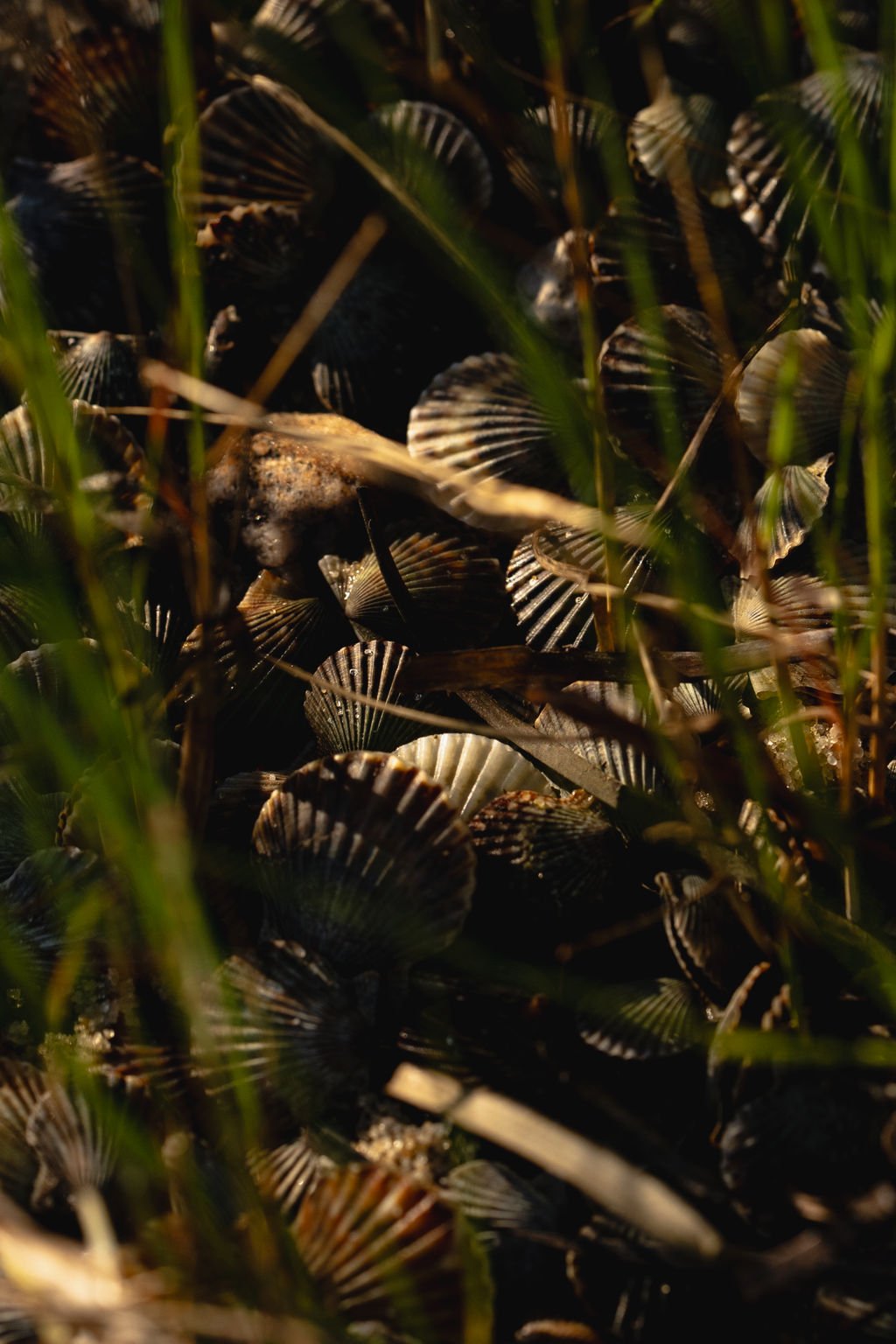
What happens next?
The NRD is currently doing their annual harbor and shellfish surveys. Based on their assessment, the NSA’s Fishermen’s Council will work together to proactively manage scallop seed in targeted locations. Much like in Madaket Harbor in April 2022, they will dredge scallops from specific locations and move them throughout the harbor for increased chances of survivability.
Why did this stranding occur?
Earlier this summer, the NRD observed large amounts of scallop seed (baby scallops) in Nantucket Harbor. Due to the declining health of the eelgrass, juvenile scallops are losing their safe habitat to grow in. When there are strong winds in a hurricane, they become susceptible to washing ashore and dying. Hurricane Lee brought multiple days of sustained high winds, mostly from the north and north west, meaning we knew to watch for seed strandings on the southern shores of Nantucket Harbor.
Why does the health of the eelgrass matter?
It’s a common misconception that scallops need eelgrass for food. They actually need eelgrass for a safe habitat. Especially when they are small, it offers them a place to attach and grow. By attaching to eelgrass, scallops are off the seafloor and better able to filter feed in the water. It also can protect them from some predators, like green crabs. Eelgrass helps keep juvenile scallops in the water and not wash ashore in weather events.
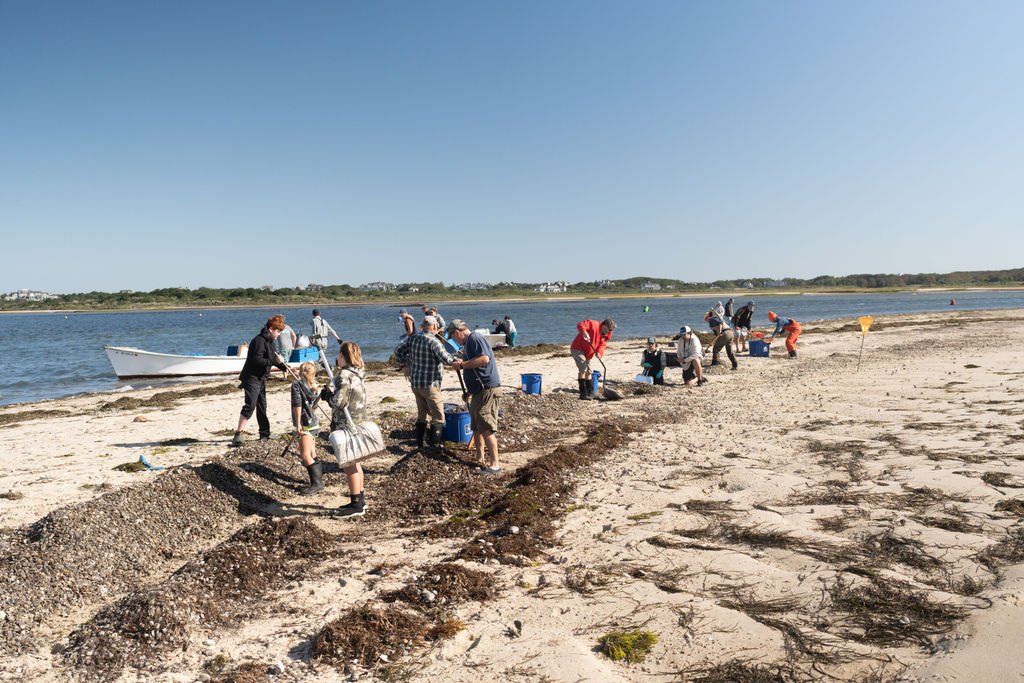
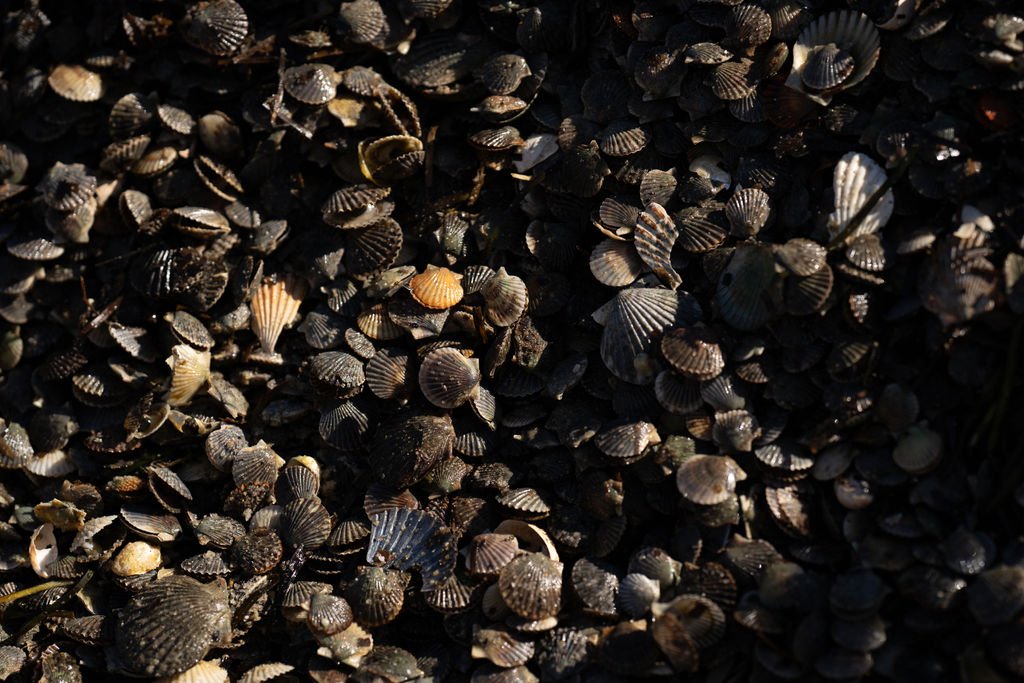
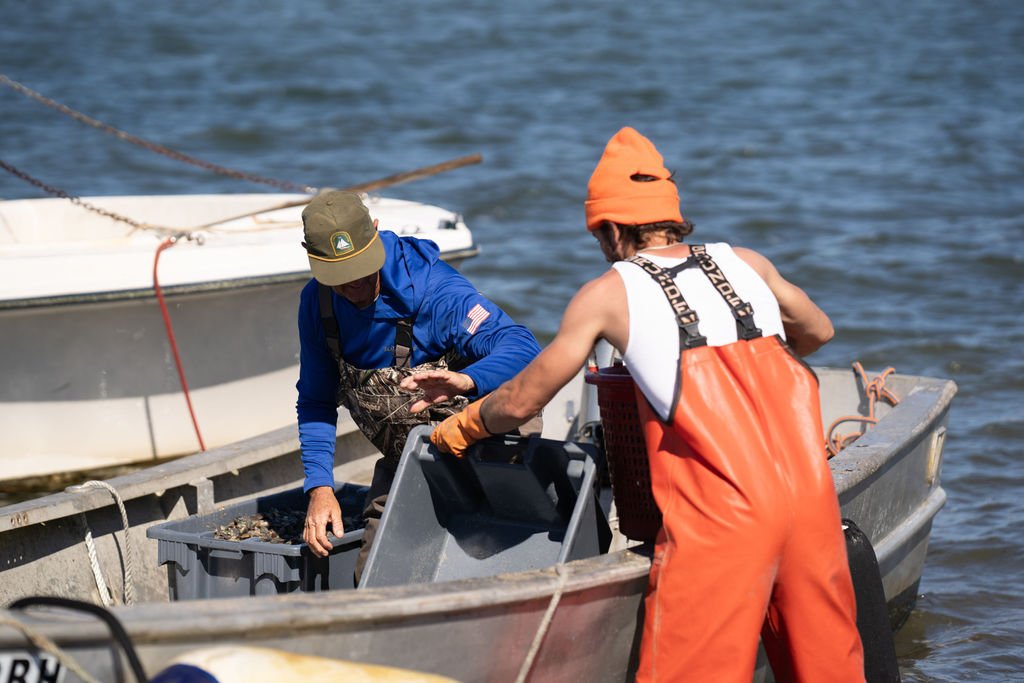
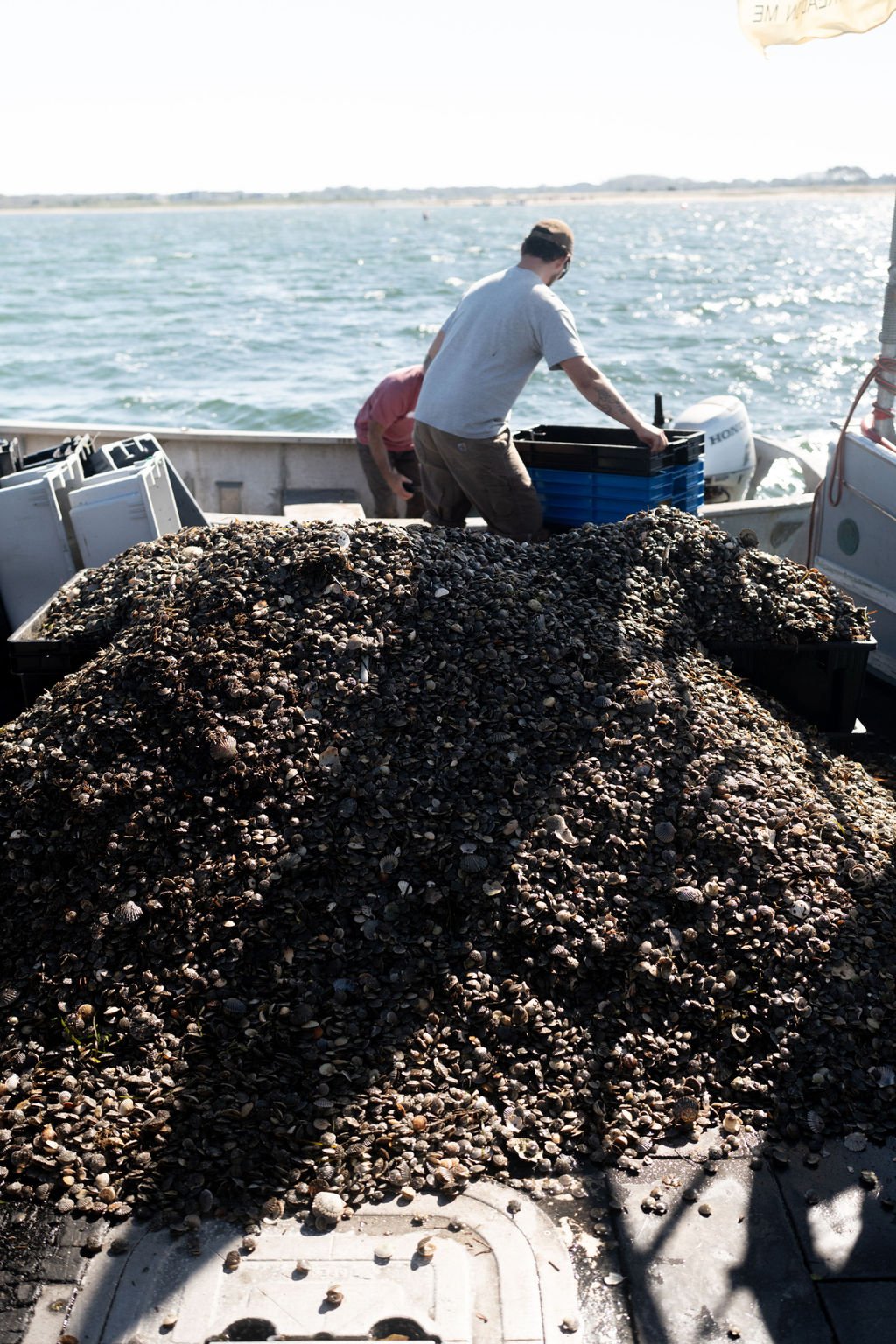
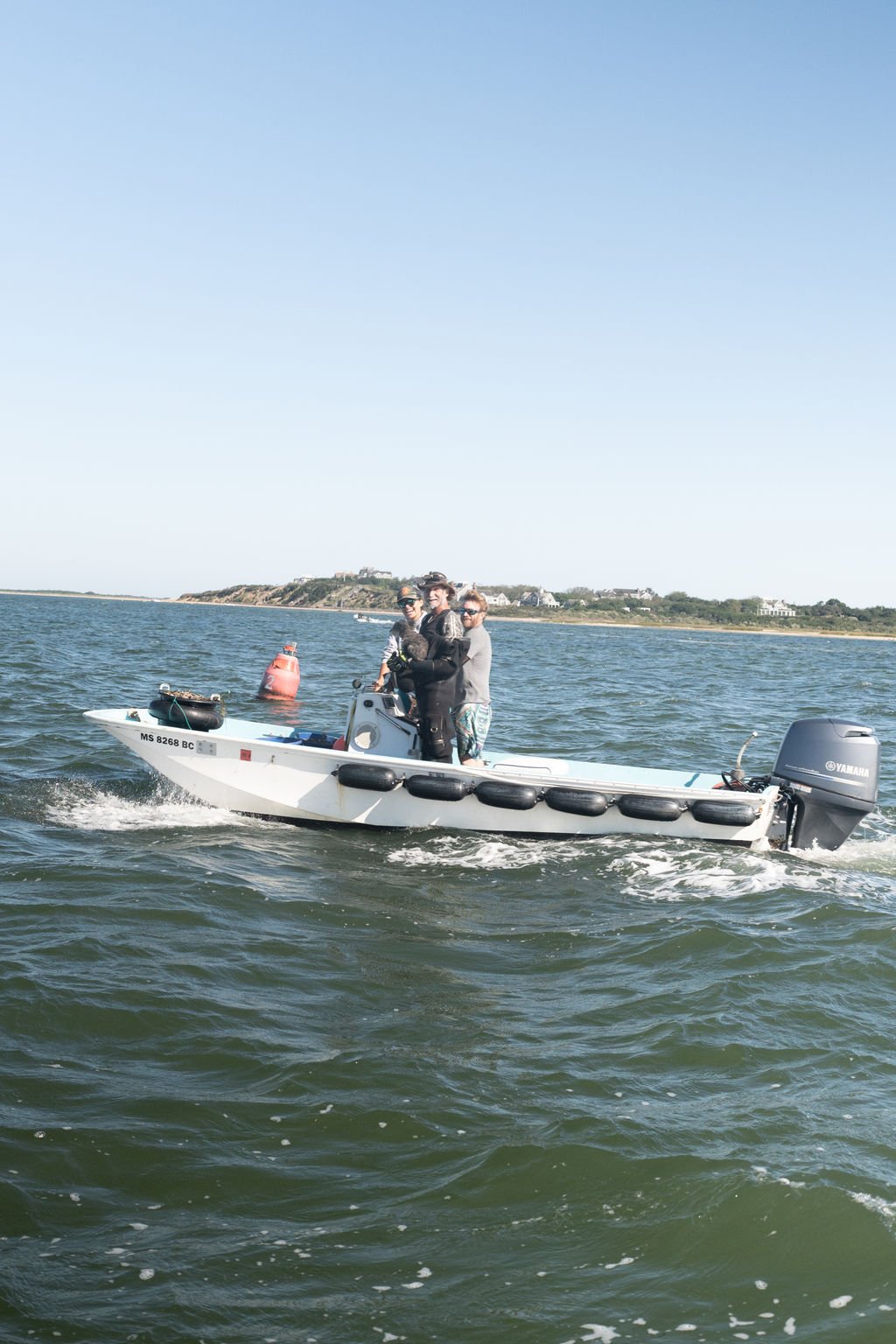
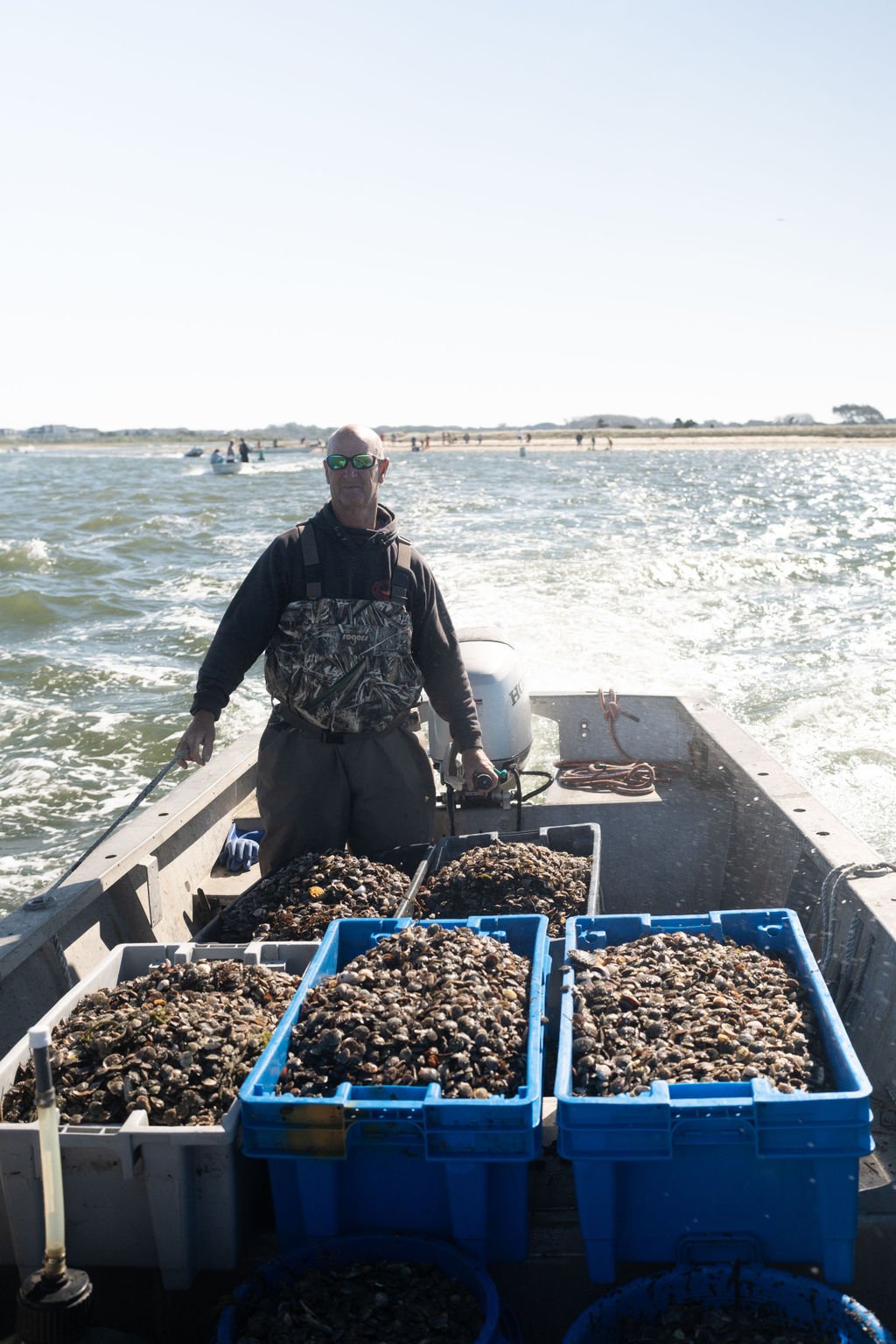
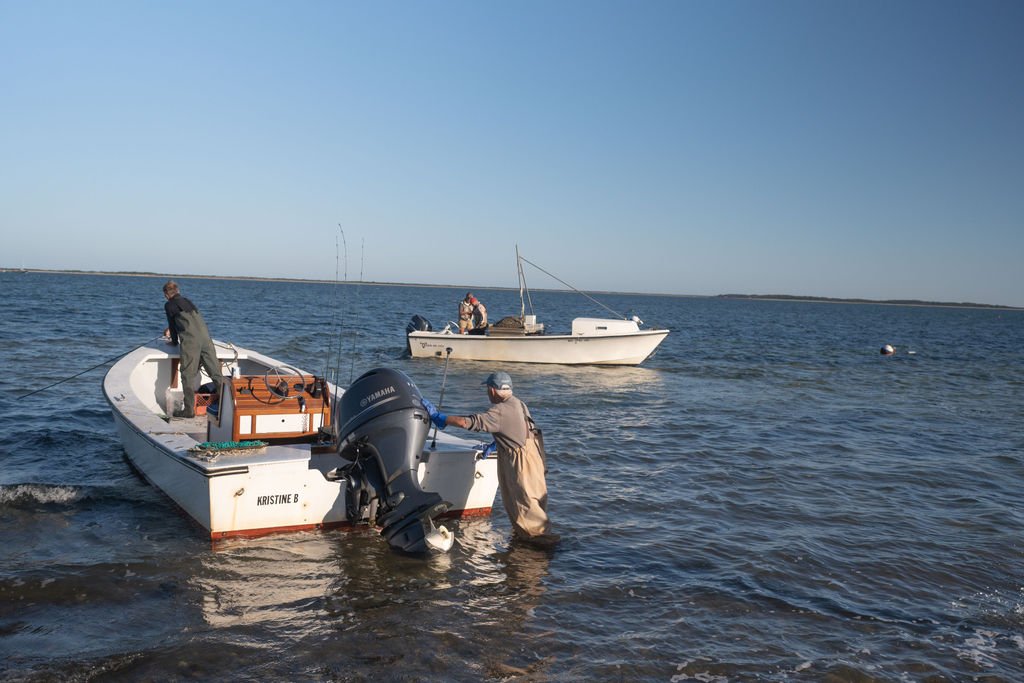
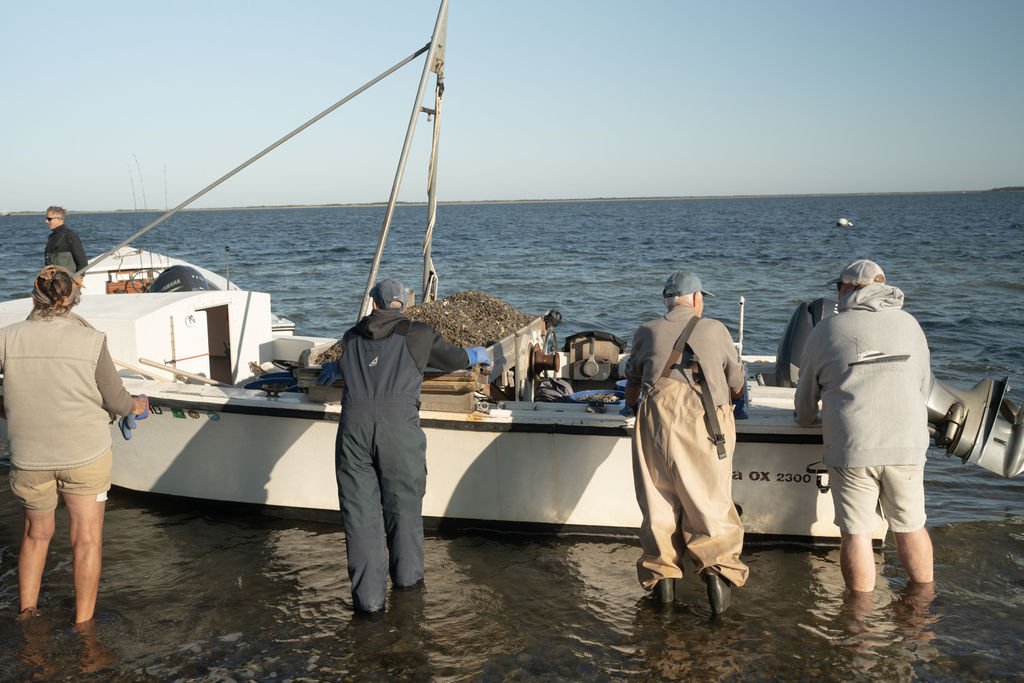
What role does fertilizer play in this?
Particularly on the southern side of Nantucket Harbor, we are seeing declines in the health of the eelgrass due in large part to nutrient runoff from land. Excess and inappropriate use of fertilizer leads to runoff into the harbor. The excess nutrients cause algae to grow, smothering and weakening the eelgrass.
What can people watch out for in the future?
Keep your eye on the forecast and specifically the wind speed and direction. If there are a few days of sustained wind from the North, there are chances that scallop seed will continue to wash ashore on the southern side of Nantucket Harbor. It’s helpful to have folks walk along the beach at low tide after a wind event and report sightings. You can always email photos to us (info@nantucketshellfish.org) or text photos to the NRD Team (508-228-7230).
How can people help the health of the harbor?
While there are many contributing factors affecting water quality and harbor health, one of the largest is fertilizer. The community of Nantucket voted at Annual Town Meeting in 2021 to ban the use of fertilizer, however it has not yet been voted on at the State House and the Town’s Health Dept and NRD find the existing regulations to be unenforceable.
We encourage you to be part of the solution to protect our water quality and harbor health. We encourage everyone to reassess what chemicals they are putting on their lawn, how much, how often, and when. There are common sense tips that, if followed by all, would benefit harbor water quality, such as never applying fertilizer before rain. Talk to your landscaper about reducing the amount of fertilizer used on your property. You might also consider reducing your green lawn footprint and introducing native plants and grasses that require less upkeep.
